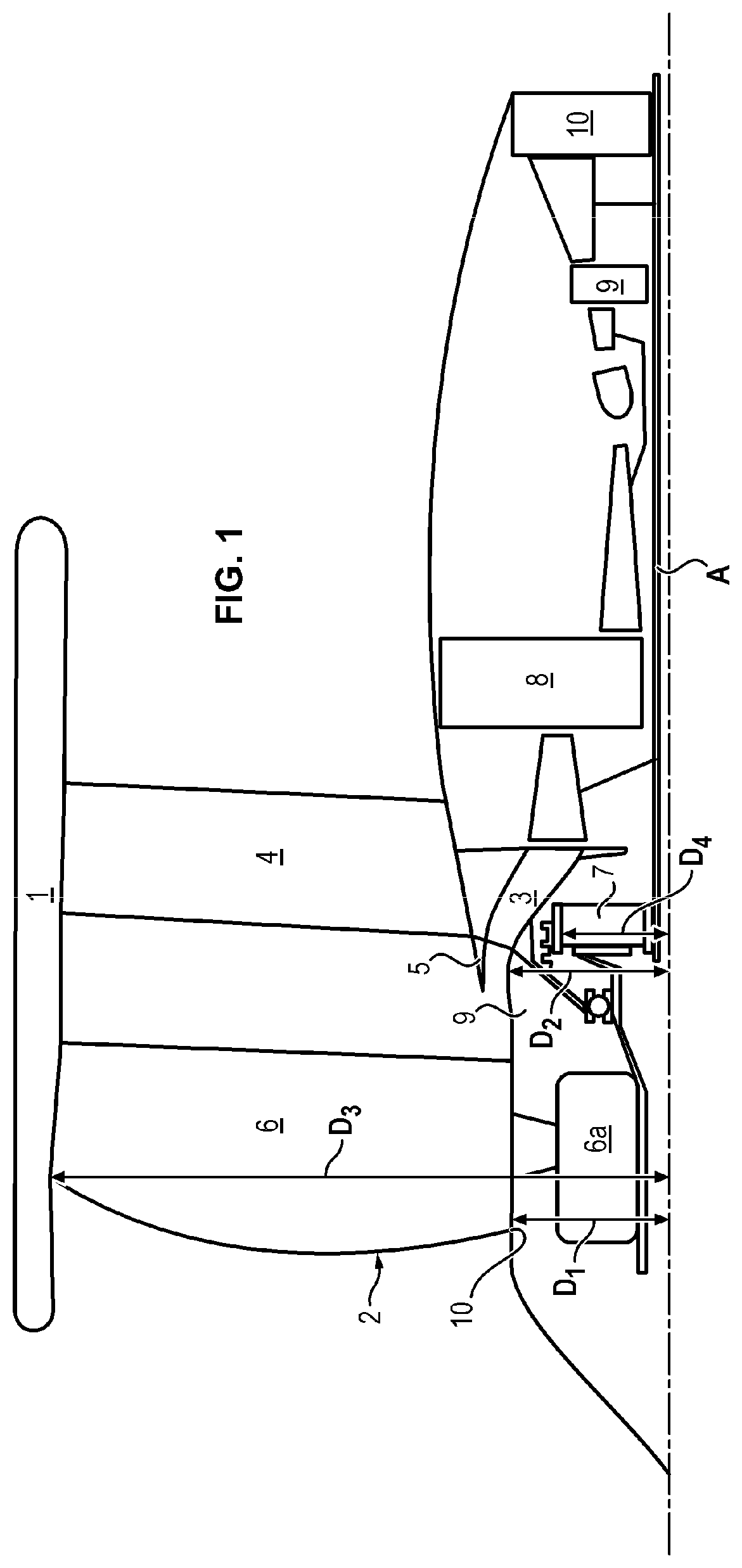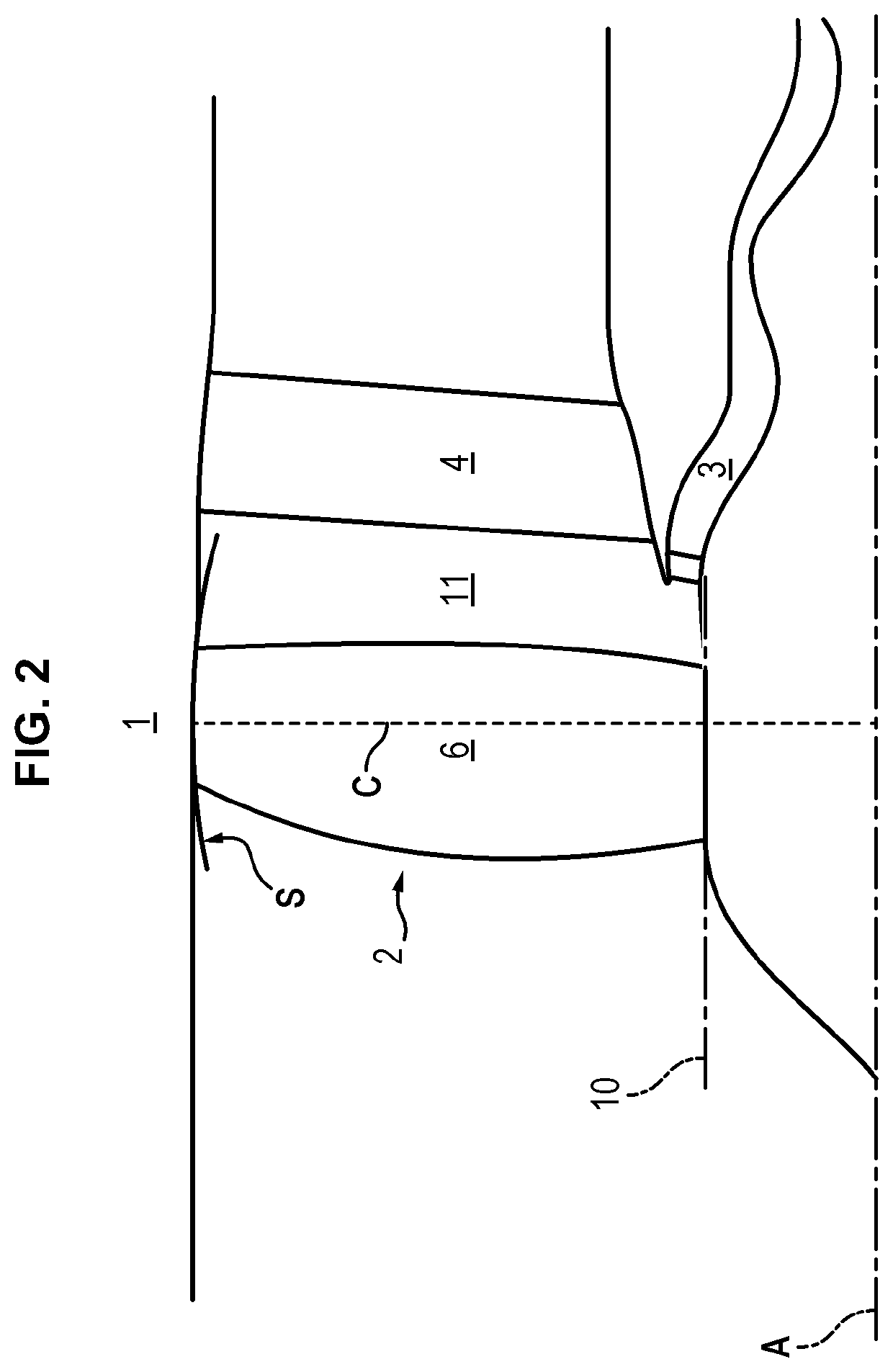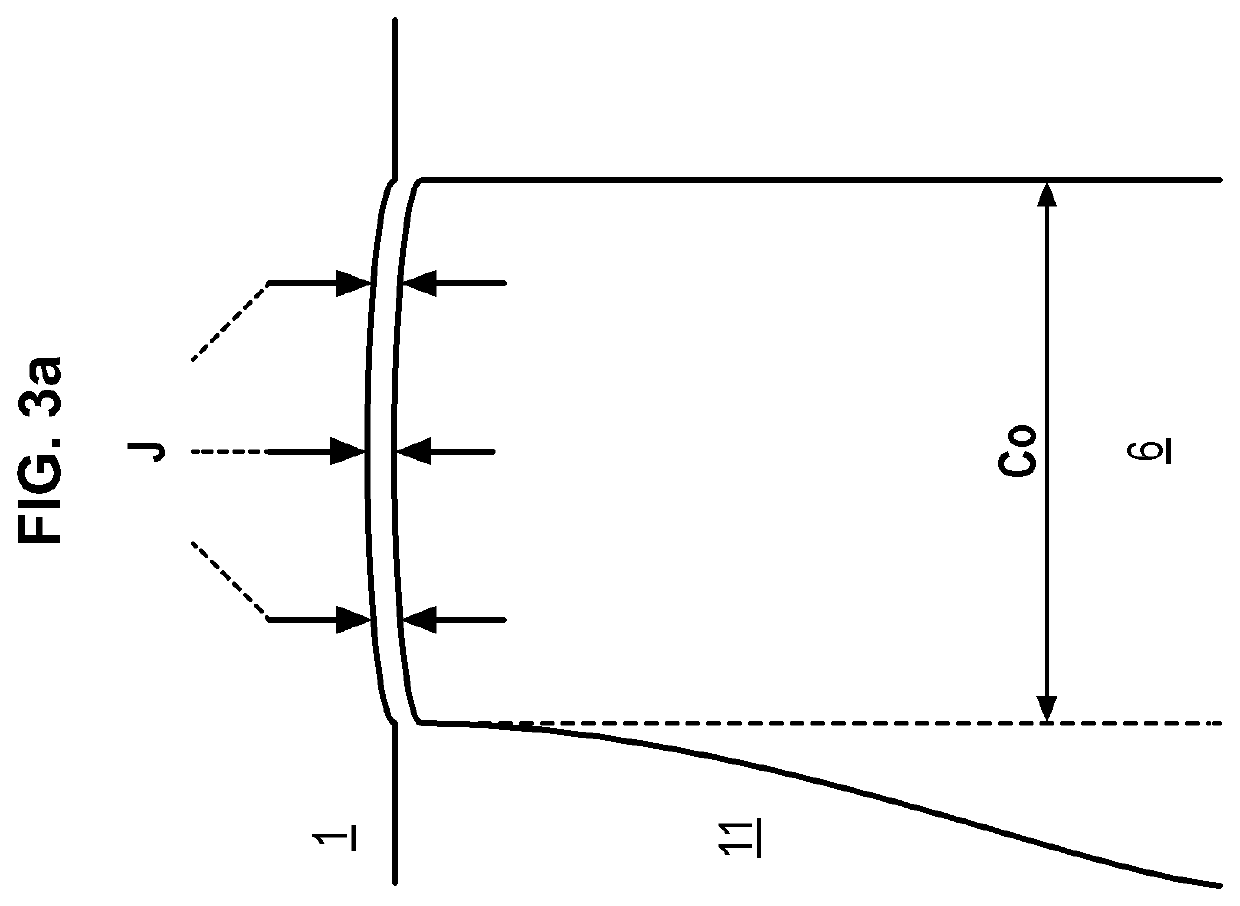Turbomachine with fan rotor and reduction gearbox driving a low-pressure decompressor shaft
a technology of reduction gearbox and turbine, which is applied in the direction of rotors, machines/engines, mechanical apparatus, etc., can solve the problems of reducing the maximum allowable flight speed of the aircraft, increasing the by-pass ratio, and affecting the aerodynamic operation of the rotor
- Summary
- Abstract
- Description
- Claims
- Application Information
AI Technical Summary
Benefits of technology
Problems solved by technology
Method used
Image
Examples
Embodiment Construction
[0059]The turbomachine T illustrated on FIG. 1 exhibits an architecture with a ducted fan having an ultra high by-pass ratio, called UHBR.
[0060]It includes a nacelle 1, a fan rotor 2, as well as a primary stream 3, defined in a casing 5.
[0061]It is also represented on FIG. 1 an inter-compressor casing 8 of the turbomachine, an inter-turbine casing 9, as well as an exhaust casing 10.
[0062]The nacelle 1 is compact and particularly of reduced length. In particular, it does not integrate air inlets or secondary nozzles upstream or downstream of the fan.
[0063]Neither does it integrate a thrust reversal mechanism.
[0064]Its main functions are to ensure the turbomachine aerodynamic fairing and the retention of the fan vanes / blades and is dimensioned solely for this purpose.
[0065]A rectifier assembly 4 is interposed between the nacelle 1 and the casing 5 and allows to hold said nacelle 1.
[0066]In a possible embodiment, a portion of the nacelle 1 can be made jointly with an already existing s...
PUM
 Login to View More
Login to View More Abstract
Description
Claims
Application Information
 Login to View More
Login to View More - R&D
- Intellectual Property
- Life Sciences
- Materials
- Tech Scout
- Unparalleled Data Quality
- Higher Quality Content
- 60% Fewer Hallucinations
Browse by: Latest US Patents, China's latest patents, Technical Efficacy Thesaurus, Application Domain, Technology Topic, Popular Technical Reports.
© 2025 PatSnap. All rights reserved.Legal|Privacy policy|Modern Slavery Act Transparency Statement|Sitemap|About US| Contact US: help@patsnap.com



